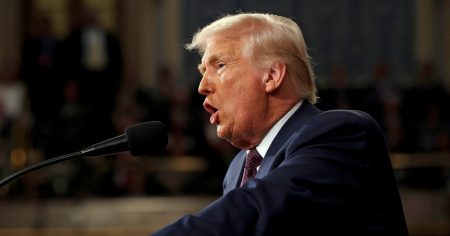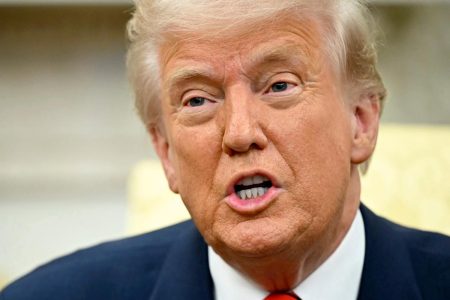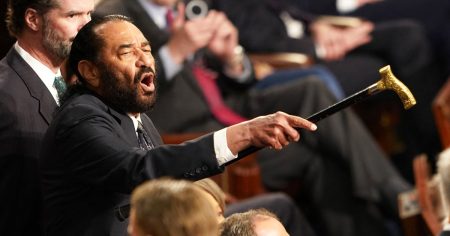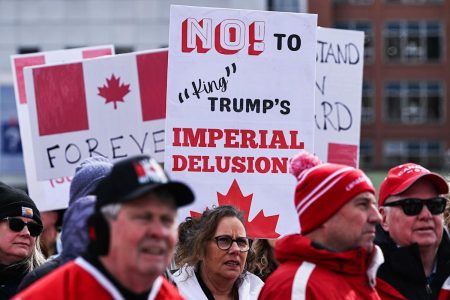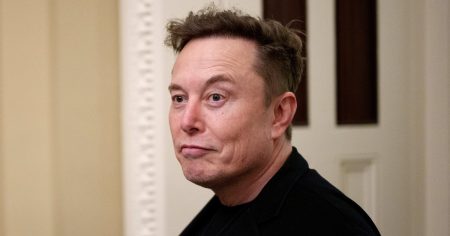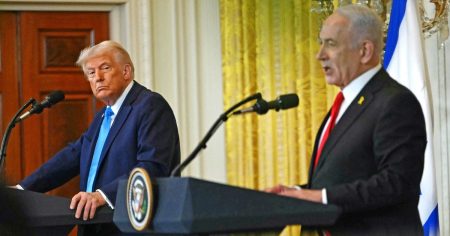Inflation Surges in January, Posing an Early Challenge to Trump’s Economic Agenda
A Surprise Jump in Prices
January saw an unexpected acceleration in price growth, presenting an early hurdle for President Donald Trump’s economic agenda. According to a report by the Bureau of Labor Statistics (BLS), core inflation—which excludes volatile food and energy prices—rose 3.3% over the past 12 months, surpassing economists’ expectations of 3.2%. On a monthly basis, core inflation climbed 0.4%, exceeding forecasts of 0.3%. This uptick in inflation could complicate Trump’s efforts to deliver on his campaign promise to lower prices "immediately" and "starting on Day One."
While the BLS report’s survey period does not yet account for Trump’s early weeks in office, the fresh data suggests that curbing price growth may be more challenging than both Trump and many economists had anticipated. The president, now 24 days into his term, took to his Truth Social platform on Wednesday, shifting blame to his predecessor by posting, “BIDEN INFLATION UP!” However, the reality is that inflation remains a persistent issue, with recent increases in key areas such as egg prices, housing costs, and airfares.
Consumer Spending Faces Headwinds
The inflation surge has left many households adjusting their spending habits. Egg prices, for instance, skyrocketed by more than 15%, marking the largest increase since 2015. This spike was largely driven by a bird flu outbreak, which has disrupted poultry supplies. Beyond eggs, housing costs, vehicle insurance, airfare, and education prices also rose, while prices for appliances, furniture, and certain types of apparel declined—potentially due to holiday-season discounts.
These shifts in prices have led to noticeable changes in consumer behavior. McDonald’s reported its largest sales drop since the pandemic on Monday, as diners opted to spend less despite a slight increase in customer traffic. With airline ticket prices climbing, low- and middle-income consumers are reassessing their travel plans for the year. Even alcohol sales are beginning to slow, reflecting broader economic caution.
Markets React to Inflation Concerns
The inflation report sent shockwaves through financial markets on Wednesday. The Dow Jones Industrial Average plummeted 400 points at the start of trading, while the 10-year U.S. Treasury bond yield climbed, signaling rising borrowing costs. The market reaction underscores the growing unease among investors about the potential impact of persistent inflation on economic growth.
Despite the market turmoil, Trump has called for lowering interest rates, tweeting on Truth Social: "Interest Rates should be lowered, something which would go hand in hand with upcoming Tariffs!!! Lets Rock and Roll, America!!!" However, reducing rates at this juncture could risk reigniting inflation, complicating the Federal Reserve’s efforts to keep price growth in check.
The Role of Trade Policy in Inflation
Trump’s trade policies have added another layer of uncertainty to the economic landscape. On Monday, he announced 25% tariffs on all steel and aluminum imports, a move that some businesses have warned could lead to higher prices for consumers. Additionally, last month’s imposition of a 10% tariff on all goods from China has already prompted retaliatory measures from Beijing.
Analysts at Bank of America have noted that the Trump Administration’s trade, fiscal, and immigration policies could collectively contribute to higher inflation. "We continue to believe that the Trump Administration’s trade, fiscal and immigration policy agenda would be mildly inflationary," they stated in a recent client note. This assessment highlights the potential long-term consequences of Trump’s policy choices on consumer prices.
The Federal Reserve’s Cautious Outlook
Federal Reserve Chair Jerome Powell struck a cautious tone during his Tuesday testimony before the Senate. While acknowledging the economy’s overall strength and the progress made in reducing inflation over the past two years, Powell emphasized the central bank’s readiness to adjust interest rates based on evolving economic conditions. He also suggested that the Fed is prepared to keep rates elevated for longer if necessary.
Powell noted, "If the labor market were to weaken unexpectedly or inflation were to fall more quickly than anticipated, we can ease policy accordingly." His remarks reflect the Fed’s nuanced approach to balancing inflation control with economic growth, even as external factors such as Trump’s trade policies and consumer spending trends introduce new variables into the equation.
Economic Uncertainty Looms Large
The combination of rising inflation, shifting consumer behavior, and uncertain policy direction has created an environment of heightened economic uncertainty. Neil Dutta, head of economic research at Renaissance Macro, has argued that the White House’s policy unpredictability is often overemphasized compared to other constraints on growth. According to Dutta, consumers are depleting their savings just as public-sector spending is set to decline, with both federal and state governments facing budget constraints.
"Uncertainty is rising while the economy is slowing," Dutta wrote in a recent analysis. This sentiment captures the precarious balance between inflationary pressures and the potential for an economic slowdown, leaving policymakers, businesses, and consumers alike grappling with an increasingly complex landscape. As the year unfolds, the interplay between these forces will likely define the trajectory of the U.S. economy under Trump’s leadership.



